Covid-Related Travel Update 2024: Though every country would have its own requirements and rules, most South-American countries are now open to travel. Please check the individual country’s official government or tourism website to know the specific rules.
What does this guide to traveling in South America contain?
- Is South America Latin America?
- What are the countries in South America?
- Is it safe to travel in South America?
- What about the natural calamities and political situations of South America?
- What is the best time to visit South America?
- What is the cost of backpacking South America? How can you do South America on a budget?
- Do you need a visa to travel South America?
- Do we need travel insurance for backpacking in South America?
- What are the best South American countries to visit?
- What are the best things to do in South America?
- What are the possible South American itineraries?
- What are the best places to travel in South America as per each country?
- Do we visit the Amazon rainforest in South America?
- Which are the best cities in South America for digital nomads?
- Do we need to know Spanish for traveling in South America?
- What are the best places to learn Spanish in South America?
- What should be an ideal backpacking South America packing list?
- What is the currency of South America? How do we carry money to South America?
- Can we get vegetarian food in South America?
- Do we need any vaccinations for backpacking South America?
- Can we work in South America?
- Can we volunteer in South America?
- Can we teach English in South America?
- Are the people of South America friendly?
- What is the drinking culture in South America?
- What are the kinds of hotels in South America?
- Does Airbnb work in South America?
- Can we couch surf in South America?
- Can we cross land borders in South America?
- Is it safe to hitchhike in South America?
- Do we need to pre-book everything in South America?
- How do we plan a trip to South America?
- What are some of the best South America travel books?
- Are there any South American traveler forums we can join?
- All articles on traveling to South America
South America is a continent like none other. I was backpacking in South America for nine months, and it was nothing like I had imagined.
Generally I keep going on and on that one should travel to South America. But, in this guide, I will mostly help you plan your South America trip. But if you are looking to get inspired, I have written down some of my best experiences in South America (one of them is learning Spanish in Chile). Give the linked travelogues a read to inspire yourself to plan your trip quickly.
As this South America travel guide progresses, you would know why I give so much credit to this continent.
Now let us begin.
Is South America Latin America?
To date, I had been making the mistake of calling South America Latin America. Now, when I have finally read about the difference between Latin America and South America, I would like to clarify the difference here.
South America refers to the part of the American continent that lies south of Central America. South America constitutes the countries including and below Venezuela-Colombia.
Latin America is used to refer to all American countries that speak a language derived from Latin. Countries speaking Spanish, French, and Portuguese — So Mexico, Cuba, and Colombia all lie within Latin America.
While Latin America is a cultural term, South America is a geographical term.
To answer the question – South America is NOT Latin America.
What are the countries in South America?
The 14 countries and foreign-held islands of Argentina, Bolivia, Brazil, Chile, Colombia, Ecuador, the Falkland Islands (United Kingdom), French Guinea (France), Guyana, Paraguay, Peru, Suriname, Uruguay, and Venezuela together constitute South America.
Is Backpacking in South America Safe?
South America is notorious for crime, and the situation can be mostly attributed to the poor financial and political conditions in some parts of the continent. The entire continent is not unsafe and need not be avoided. Not anymore than any other place in the world.
I visited Bolivia, Chile, and Peru during my nine-month solo travel in South America. And the afternoon when two teenage boys snatched my mobile on a running bus in Santiago is the only bad incident I have to recall.
Avoid roaming around Santiago alone in dark or even during the day in empty streets. If you are taking the Santiago metro, hold onto your purse.
Except for Santiago, a city full of robbers and petty thieves, and Valparaiso, I felt safe in all the destinations in all three countries. No one ever harassed me or tried to loot me. (Do consider this taxi pickup at the Santiago airport if you are traveling to the city for the first time.)
Now amongst the rest of the South American travel destinations, Brazil and Venezuela are unstable and unsafe because these two have been in political turmoil.
Fellow travelers who had been to Brazil mentioned scary incidents such as getting robbed at gunpoint on a beach. Even people who traveled recently don’t vouch for Brazil. Venezuela is in a political crisis and unsafe to travel to.
Some of the safest countries in South America are Chile, Ecuador, Uruguay, and Argentina.
I was told Chile is the safest country in South America, and I felt so, too. Safety is coupled with financial security, and Chile is economically stronger than a lot of its neighbors. The south of Chile was so safe we never had to think before getting out for a walk (mostly on the Chiloé island), alone, at night.
Except for the recent protests in Chile, the country is mostly peaceful. My Chilean friends told me they want a peaceful protest but a lot of rowdies disrupt the rallies and create chaos. Some blog readers traveling in Chile recently said they were safe and faced no issues during the protest.
If you plan a Chile trip, use my extensive Chile Travel Guide and travel tips for Chile. Though there was a political uproar in the country and Chileans were out on the streets protesting, peace was restored after the 2021 elections in which a left-wing candidate was sworn in as president. My Chilean friends do tell me though that Chile has changed forever. I would have to visit again to understand what those changes mean for travellers.
Many forums also talk about the dangers of backpacking Peru and traveling in Bolivia, but when I was there, I didn’t see or hear about any major crimes against travelers. My friend’s camera was stolen from her in Lima on New Year’s eve. But, well, anything can happen in the crowd of New Year’s eve. Be careful in the big cities of South America as petty crimes and mugging are generally most common in the large cities.
Colombia is also notorious for kidnappings and other crimes but these incidents are not scattered throughout the country. Avoid the destinations where such crimes have been reported in the past.
Quito, the capital of Ecuador, also has some history of mugging. There are registered cases of thieves trying to steal from passengers on buses in Ecuador. Keep your belongings with you and not on the shelves above the seat – in all of South America.
If you backpack in South America, be aware of these scams,
Taxis and ATM Scams — Bolivian cities are known to be prone to ATM threats. It means your taxi driver will drive you to an ATM and threaten you to withdraw cash and hand it over. I took taxis in La Paz, Santa Cruz, and other cities, but I met only the nicest taxi drivers. They took the extra step to drop me at the right place. But be careful.
How to avoid it? Walk to withdraw cash from the closest ATM. Once you have taken out the money, go back to your hotel and keep the card and extra cash. Only carry enough for a day. Never bring your debit or credit card with you except when you want to withdraw cash. Try to take Uber in big cities or ask your hotel to call you a cab.
Dirty Clothes Scam — Another scam prevalent in almost all of South America is that someone would come over and say your clothes are dirty or have paint over them. While you look, your bags would be gone.
How to avoid it? Keep your belongings on you all the time. Don’t pay attention to strangers.
Luggage Robbery on Buses — A common occurrence in South America when travelers aren’t careful.
How to avoid getting robbed? Keep your important items on you. While sleeping keep them under your head or close to you rather than putting them on shelves above the seat. Your bigger bag can go in the luggage compartment.
In big cities like Quito, Medellin, Santiago, and Lima, pickpockets do try to take advantage of travelers, and you should keep an eye on your surroundings.
South America isn’t much different from many other countries and continents in terms of safety. Please don’t let anyone tell you South America is a bad place and it’s entirely unsafe.
Use your judgment, ask your hotel for their safety advice, read about the local scams, and follow the common safety norms to be followed in any new country while traveling to South America, too.
Travel Essentials: Consider this safety whistle and a fanny pack to carry money and other important items.
What about the natural calamities and political situations of South America?
Natural calamities of South America include volcano eruptions (I even did the active volcano Villarrica hike in Chile), earthquakes, and tsunamis, amongst many others. Chile is in a high-earthquake zone, and due to the earthquakes, the country is also prone to tsunamis and volcano eruptions. Many other South-American countries suffer from similar natural tragedies.
While I was traveling in South America, Chile was hit by a strong earthquake among many other little ones. The ocean routes were blocked, the transport stopped where it was, and tsunami alerts were issued. If it wasn’t for the earthquake, I would have been on a boat in the ocean watching penguins hopping around (only one of the many best things to do in Chile).
South America has many emergency-evacuation processes, and roadsigns in the continent confirm that.
While I cannot confirm nothing will happen while you are in South America, my advice would be to stay alert, travel with insurance, follow the local advice, and you should be fine.
Political calamities of South America, however, are much more serious. They sometimes involve a presidential candidate jumping over the fence to participate in an election to people marching out on the streets protesting the government-levied charges, or you might even hear of a president changing the constitution to be able to contest in an election.
I can go on and on about Morales and Maduro but let us say protests are common in South America. People protest about salaries, human rights, a long-forgotten war with a neighboring country, presidential rule, corruption, et cetera.
While I am not asking you to ignore the political situations of South-American countries, I can assure you the processions mind their own business mostly. The few marches I saw were peaceful. But it doesn’t take much time for things to get complicated, and when they do, leave.
Before planning a trip to South America, or any country, check the news and ask your embassy about the safety of your travel destination.
What is the best time to visit South America?
South America is in the Southern hemisphere, unlike the US, Europe, and India. This implies the climatic conditions of South America are the opposite of these countries.
South America enjoys all four seasons. Here are the timings of the typical seasons of South America,
Summer — October, November, December, January
Autumn — February, March, April
Winter — May, June, July, August
Spring — September, October
The countries receive heavy rainfall from January to March. The south of Chile receives rainfall throughout the year, but especially heavy downpours in August, September, and October.
As South America is a giant continent and has varied geographical conditions, the best time to travel to South America isn’t the same throughout the continent. While San Pedro de Atacama and the Atacama desert might be scorching, Patagonia would be having its high season, and the high Andes wouldn’t warm up for anyone — that is the story of South America.
If you start at the end of summer, plan your travel route from the colder parts of the continent to the warmer areas. But if you arrive in South America in peak winter, first visit the hotter areas before you think about heading down South.
Here are some of the appropriate travel times for the best destinations in South America:
Atacama desert — I explored the gorgeous Atacama desert in February beginning. The day was scorching, and the nights were cold. A better time to visit the desert would be either March and April or October and November.
Patagonia — Summers are the best time to visit this nomadic land.
Bolivian and Peruvian Mountains and high-altitude places — The high-altitude places of Bolivia, Ecuador, Peru, and other countries are never hot. When I was backpacking Bolivia and Peru in March and April, even on sunny days the weather could get rainy anytime. A strong wind made the day colder than expected. Not to mention the altitude of the place that never let the mountains warm up. But the weather was still nice at that time, and I wouldn’t have wanted to be there in winter.
Spending the summer in the mountains would be ideal.
Overall, the months of October to March/April are the best to visit South America.
What should be your South America travel budget?
South America isn’t as expensive as it might look.
The cost of traveling South America would depend on your travel style. But estimate your monthly travel budget to be 1000 USD, almost 30 dollars a day.
Chile, Brazil, and Argentina are the most expensive countries in South America. I don’t have the expenditure of my South America trip written down, but here are the breakdowns of some major costs.
Chile
Bed: 10,000 to 20,000 Chilean Pesos – $10-20 (I took a mix of private rooms and dorms.)
Food (3 meals): 10,000 Chilean pesos – $10 (Eating at local stalls, small food joints)
Total: $20-30 for food and accommodation. Plus add for activities such as the tours in the Atacama, hiking volcanoes, traveling by bus or flights, et cetera.
Total backpacking budget per day: $40-60 [Destinations such as Pucon, San Pedro, Easter Island, and Patagonia would be costlier than the rest.]
Bolivia
Bed: 30 to 80 Bolivianos – $5-15 (for a treehouse or an average bed in a dorm)
Food (3 meals): $3 and above (the regular Bolivian meals start from 4-5 Bolivianos or <1 USD)
Total: $10 for decent food and bed.
Total backpacking budget per day: $20-40 [Adding up for activities such as the Uyuni Salt Flats tour, the Amazon, or biking the death road and traveling by buses or flights.]
Peru:
Bed: 35 Peruvian soles – $10 (You can even get a good private room at this price.)
Food (3 meals): $2 and above (You can get a set menu — a fixed course and a soup for $1-2. Those meals are delicious, and I was never dissatisfied. A regular meal in a restaurant will cost a little higher but should be under USD 10.)
Total: $15 for bed and food.
Total backpacking budget: $30-50 [Including the long bus journeys and guided activities such as visiting the Manu National Park in the Amazon rainforest or going on the Colca Canyon trek.]
Brazil: $50 per day – The travel friends I asked and the forums I read, all say $50 is a good budget for a day. You can’t go lower but can easily go higher so watch out for what you spend.
Argentina: $30-50 per day. The food and accommodation are affordable in Argentina but the tours and transport are comparatively more expensive.
Colombia: $25-40 per day. Colombia isn’t that expensive and you can easily stick to a budget here.
Ecuador: $20-40 per day. Not counting the Galapagos island.
Overall, a daily budget of $30-40 can be estimated for South America after averaging out the daily budgets of all its countries. This cost will increase if you visit more expensive countries or stay in them longer (such as Brazil and Argentina). Private rooms (as compared to dorms), eating out at restaurants (instead of the daily meals), and expensive hiking tours (over the budgeted ones) increase the travel cost, too.
Do you need a visa to travel in South America?
South America doesn’t have one visa. Every South-American country has its entry-exit requirements.
Indians need visas to some countries while for the rest they can get a visa on arrival or free entry if they have a valid US, UK, Australian, or Schengen visa. My visa guide for Indians lists all the South American visa requirements country-wise.
Canadian, British, US, or Australian passport holders have free access to most South American countries. Check the individual country’s page or your embassy’s website.
You can also get visas while backpacking in South America as I did. While I was in Chile, I got the visa for Peru for Indians. When I was in Peru, I got a visa for Bolivia, and in Bolivia, I got a Chile visa.
I get a lot of emails and questions regarding South-American visas. Read those discussions on my individual visa pages (linked above).
Do we need travel insurance for South America?
Yes. Of course.
The best travel insurance for South America for Western travelers is World Nomads. All my travel friends from around the world can’t speak enough about it.
For Indians, I find the prices of WorldNomads a bit high (currency conversion). You can get travel insurance to South America on InsurancePundit. Compare the various insurances before purchasing. I have used Insurance Pundit a few times now, and I am happy with the experience.
(The InsurancePundit hasn’t paid me to leave the review.)
What are the best countries to visit in South America?
I was in Chile, Peru, and Bolivia and loved the three countries. I also wanted to go to Colombia but couldn’t visit due to visa issues.
As I said above, Venezuela is under a political crisis. So excluding that, all the countries in South America are great to visit.
Argentina is known for its cool culture, cosmopolitan towns, delicious wine, adventure travel (such as hiking in Patagonia), and joy de vivre. Buenos Aires is considered to be one of the most popular cities in South America due to its fun culture and open-minded Argentinian people.
Brazil, Colombia, Ecuador, Paraguay, Uruguay, and Suriname are great places to visit. Many of my travel friends were there and they loved these countries for each of their own reasons.
I haven’t heard much about the Falkland Islands (United Kingdom), French Guinea (France), and Guyana because not many people go there. If you go, would you please come back and tell me how you liked them?
What are the top things to do in South America?
I have written about my best moments in South America in detail in the linked travelogue. Let me give you another glimpse of what to expect on your South America backpacking trip.
You can hike glaciers, icy volcanoes, deep canyons, high Andes, and national parks.
Go for safaris and boat rides in the Amazon, the oldest tropical rainforest in the world.
Explore centuries-old ruins of the Incas, one of the most advance ancient empires.
Live with indigenous families on remote islands in the world’s highest navigable lake Lago Titicaca.
Dance like crazy in carnivals that liven up the streets of many South-American countries throughout the year.
Visit penguin colonies and see them play around in the Pacific on a regular ferry or from a remote island.
Go to Galapagos island to explore some of the unique animal life that stands testament to Darwin’s Evolution Theory.
Write poetry about Peru.
Indulge in delicious and unique food. Think cheese-stuffed empanadas and juicy ceviches.
Wander in vast deserts searching for salt flats and dense starry nights.
Shower under some of the highest waterfalls in the world.
Accompany the NatGeo and Discovery teams on river safaris in one of the most panther-dense zones of the world alongside
Photograph red lakes home to thousands of pink flamingoes.
Ride bikes on some of the most deadly roads.
Watch football with the locals.
Enjoy vibrant city life that promotes an open culture and welcomes all.
Oh, let us not forget Chile and Argentina are one of the best wine producers.
And, the people of South America are the most fun people I have ever met. They eat and drink and dance and merry like old times.
So while planning your perfect South America traveling route, keep an open mind for even I cannot list all the experiences to have there.
In the next sections, I talk about the possible South America itineraries in detail.
What are the best South America backpacking routes?
To understand the possible South America travel routes, let us look at the connected countries of South America:
(Starting from the top) Venezuela — Colombia — Ecuador — Peru — Bolivia — Chile — Argentina — Uruguay — Paraguay — Brazil — French Guinea — Suriname — Guyana (going Anti-clockwise)
The best backpacking routes in South America would be the ones on which you travel from one country to another while never having to jump countries for that is how you save the most time and money. If you love overlanding, as I do, you would also want to travel from one country to its bordering nation by land. But if you don’t want to cross land borders, take a flight out.
For this South America itinerary, let us assume you are traveling to bordering countries.
Here’s my South America travel route.
Chile – Santiago >> Castro, Chiloé (taught English in Chile as a volunteer) >> In between traveled to many parts of Chile such as Puerto Varas, Puerto Montt, Valdivia, Osorno, Valparaíso, Viña del Mar, Cauquenes, Hornophiren, Santiago, many other islands near Chiloé >> Pucon >> Atacama >> Arica >> (Crossed the border into Peru) >>
Peru – Arequipa >> Colca Canyon >> Arequipa >> Puno >> Lake Titicaca and its islands >> Cusco >> Manu National Park, Amazon, Peru >> Cuzco >> Machu Picchu ruins >> Cusco >> Ruins around Cusco >> (Crossed the border into Bolivia)
Bolivia – Copacabana >> Isla Del Sol >> Copacabana >> Lago Titicaca and Isla del Sol >> La Paz >> Santa Cruz >> Samaipata >> Santa Cruz city >> Sucre >> Uyuni >> Salar de Uyuni Tour >> (Tried crossing the border from Bolivia into Chile but couldn’t as my visa had expired so went back to Bolivia to get Chilean visa) Uyuni >> La Paz >> Uyuni >> Arica >> Santiago >> Castro >> Santiago (Flight out to India).
I did this above itinerary in about nine months; I was slow as for the first four months I was in Chile on the island of Chiloé teaching English. I spent about 6-7 months in Chile and divided the rest of the months in Bolivia and Peru equally, so about a month and a half in each country. That time was enough to travel at a slow pace in both Peru and Bolivia, and I still saw a lot.
Feel free to pick my above itinerary as these three are some of the best South American countries to visit.
Or take any route through the connected circuits from this bigger loop:
(Starting from the top) Colombia — Ecuador — Peru — Bolivia — Chile — Argentina — Uruguay — Paraguay — Brazil — French Guinea — Suriname — Guyana (going Anti-clockwise)
Let us look at some possible travel routes.
2 weeks in South America — In two weeks in South America, travel to one country. Pick up any of the above-mentioned countries.
3 weeks in South America — For 3 weeks, visit a maximum of two countries. So either a combination of Colombia and Ecuador or Peru and Bolivia or Bolivia and Chile and so on.
Four weeks in South America — You can visit two to three border countries but I still recommend just one or two.
Remember that distances between two destinations in South America are large.
A possible and comfortable South America itinerary 1 month — Three countries such as Argentina, Uruguay, and Paraguay are doable because the last two countries are small.
If you want to spend 2 months in South America — You can travel to three to four countries. Let us say you visit Ecuador — Peru — Bolivia — Chile in the two months. Spend ten days in Ecuador, twenty days in Peru, ten days in Bolivia, and the rest in Chile.
But even after spending about three weeks each in Peru and Chile, you won’t be able to see all the best places there. So another option for your 2 months South America itinerary could be to visit only Peru and Chile for a month each. In a month in each of these fantastic countries, you can see a lot at a not-so-fast pace.
Seeing one place properly is better than flipping through multiple places.
3 months in South America — You get the idea.
The ideal duration to explore each of the above countries:
Venezuela — A no-go right now.
Colombia — A month would be ideal. People who go to Colombia never want to leave but a month is a good time to see the major places at a medium pace.
Ecuador — Twenty days would be a good amount of time to see Ecuador.
Peru — A month seems ideal in Peru. There are many things to do in Peru. Again, if you want to skip everything to wander in the Andes, then an infinite amount of time won’t be enough. But even ten days would do.
Bolivia — The ideal time to understand Bolivia and see some of its most amazing places would be about 20 days. Some people only visit the Uyuni Salt flats and get out. I loved Bolivia and spent about a month there. For the salt flats, a few days are enough.
Chile — A month is ideal for Chile. Chile is a long country with a lot of places to see and amazing things to do. But if you are short of time, start with two weeks.
Argentina — Twenty days would be ideal for this big country. You can easily spend a month or two there.
Uruguay and Paraguay — Ten days would be an ideal time to spend in each of these countries. Few travelers go to these two but that doesn’t mean Uruguay and Paraguay don’t have good places.
Brazil — Twenty days would be a good time to start with Brazil. Brazil is a huge country and also not all of it is safe to visit.
French Guinea/Suriname/Guyana/Falkland Islands — Though I can’t tell you the exact time, I think 1-2 weeks would be ideal, to begin with.
Having said all of the above, starting from 14 days to spending anything up to a year or longer is a good time for South America.
What about the working people who do not have more than two weeks to spend at a stretch in South America? Please don’t lose hope after reading my extremely self-centered South America travel itinerary.
Go for two weeks. But don’t plan to hop to more than one country then. Visit a new country on your next South America vacation. And so on.
What are the best places to travel in South America as per each country?
I would let you in on my favorite places in Peru, Bolivia, and Chile.
Chile — the Atacama desert, Patagonia, Vina del Mar, Valparaiso, Chiloé island, Hornophiren, Chaiten, Pucon.I also had a great time spending Diwali with a Chilean family in Cauquenes.
Bolivia — Uyuni Salt fields, The Amazon, Samaipata, Torotoro National Park, Copacabana town, Lake Titicaca, and its islands. Here’s an all-inclusive 3-day Uyuni Salt Flats tour that will take care of all the arrangements.
Peru — Puno and Lake Titicaca, Colca Canyon, Cusco city, the Inca citadel Machu Picchu, Andes mountains around Cusco, and the Manu Park in the Amazon.
I will add more to this list when I visit the other countries later.
Do we visit the Amazon rainforest on our South America trip?
Of course. You can read about my visit to the Amazon rainforest in Peru to see how exploring the Amazon is like a once-in-a-lifetime opportunity for anyone.
I went to the Manu National Park from Cusco, but you can also visit the forest from Iquitos. It is further inside and takes longer to reach. Of course, the longer the journey is the bigger is the adventure.
The Amazonas can also be visited from Brazil, Bolivia, or Colombia. Guyana, Suriname, French Guyana, and Ecuador also have the Amazon jungle, but the area under the forest is pretty small there.
Tours to the Amazon range from four-day to even month-long adventures. Choose one that suits your budget and preferences. Here is a popular tour of 2-3-4 days in the Anaconda lodge of Brazil that I have on my mind for the next time.
Which are the best places in South America for digital nomads?
Lima, Cusco, Arequipa, Puno, Santiago, Castro (Chile), Medellin, and Buenos Aires are some of the best cities for digital nomads. Internet, housing, culture, food, activities to do, and a thriving digital nomad community make these cities more special than the rest.
Amongst all the big cities, I have listed Castro, the little town on the island of Chiloé, as a great option for a digital nomad. It is a gorgeous place with a strong sense of community. If you have been wanting to get away from big city life, slow down in Castro and rent a stilt house. It will have a sprawling view of an azure ocean and sheep grazing on the neon grassland nearby. Castro is quite affordable, too.
Arequipa and Puno are tier-two cities with a lot of nature, a strong cultural background, and many things to do.
All the other cities I have mentioned are popular amongst digital nomads and for all good reasons.
Do we need to know Spanish for traveling South America?
Even though a lot of travelers plan to learn Spanish in South America, they never say more than a hola and they still manage. I learned Spanish while living and teaching in Chile and further polished my Spanish skills while travelling in South America.
Spanish is handy almost everywhere in South America. Most people do not speak English there (not even tourist guides and hotel managers). And speaking a few words of Spanish would make you a local’s favorite in no time. Even a broken phrase of Spanish would go a long way when it comes to hitchhiking, boarding a bus, or ordering a cerveza.
This is probably one of my best South America travel tips— take the effort to learn Spanish in South America. Even though you can manage without it, your travel experience would change entirely even if you speak a little bit of Spanish.
Spanish is a fun language and has many words similar to English. So if you put in some time daily to learn Spanish and try speaking it with the locals, you would manage your way pretty soon.
But remember all the countries speak a little differently. If you learn Spanish in Argentina, you will be surprised by the accent of Chileans or Colombians. But the locals will understand. Chile is one of the worst countries to learn Spanish because of the strange slang and the accent of Chileans. But I could understand any Spanish after that.
What are the best places to learn Spanish while traveling through South America?
The best way to learn Spanish is while traveling and speaking to the locals. You can also stay in one place and learn from native Spanish teachers. Sucre has many Spanish schools and individual tutors who teach foreigners in private or group classes.
Cities like Cusco and Buenos Aires are perfect for learning Spanish as you can easily spend a lot of time exploring these cities while getting a grasp on the language.
What should be an ideal South America packing list?
Your ideal packing list for South America should have these below items. I have taken the recommendations for men from my friends and my partner.
What is the currency of South America? How to carry money while traveling in South America?
The currency of South America is different in each country.
You should carry your credit and debit cards, and some cash (USD or Euros or other strong Western currency). Though all ATMs in airports dispense cash in the local currency, sometimes having a bit of money on you is helpful.
The best place to exchange money would be the local exchange shops in any (big) city center and not the banks (banks’ exchange rate is the worst). I carried a travel card with a $1000 balance and another $5oo in cash. This money ran me quite some time. Bringing cash is a good idea for all the ATM withdrawals incur transaction (and in some cases currency conversion) charges. Ask your bank if they can reduce your international transaction charges.
In Chile, Banco Estado had the least international card withdrawal fee. Do try government banks in all South American countries for they would be the cheapest for international withdrawal.
As I mentioned in my travel planning guide, inform your banks about your international travel. My bank blocked my debit card when it detected a transaction in Chile. I had to make an international call to inform them I was the one trying to use the card.
I don’t know even one bank in India that gives leverage to a frequent traveler. If you do, please let me know. I would appreciate that.
Also never carry your entire cash and card with you while moving around cities. Keep them back in the hostel to save yourself from ATM scams (more about them in the travel safety section).
Or hide everything away in a slim fanny pack.
Can we travel South America as a vegetarian or a vegan?
South American food is mostly non-vegetarian.
Traditional food in South America is barbecues (asados), grilled meat and steaks (beef, pork, chicken), fried fish, rice, bread, cheese, seafood, fried empanadas (stuffed pastries) of various types, et cetera.
Meals are made up of two-three courses and start with a serving of soup. Vegetarians and vegans would have a hard time finding a course that is entirely vegetarian. When I was traveling South America alone, I didn’t eat beef. Even if I asked the server for a no-beef meal, they would serve me the soup which was mostly made with ground beef. I had to be careful and ask multiple times.
Argentina, Chile, Bolivia, and Colombia eat a lot of steak and meat, mostly beef. Peru had a lot of vegetarian options but had the same soup problem. Big cities have more vegetarian and vegan cafes. But on small towns, villages, or on islands, you might have a hard time finding vegetarian food.
You can always order vegetarian fried rice and that is what a lot of tourists did. Or buy groceries and cook in the guesthouse’s kitchen.
My best food in South America was Casuellas (Chilean soup), sea algae cooked in various styles on Chilean islands, Peruvian preparations, empanadas, and fried trucha (trout) fish. Oh, after a while I also started loving the Chilean bread when grilled with cheese and tomatoes and other things.
Do try the traditional South American food. My Spanish travel phrases guide has many phrases that will help you understand the ingredients and order as a vegetarian.
Good luck.
What are the recommended vaccinations for traveling to South America?
I would suggest you talk to a doctor or look at your embassy’s website for recommended vaccinations for South America.
Medical advice is always best taken from medical experts.
Can we work on our South America backpacking trip?
Tourist visa doesn’t allow you to work. But many travelers sell their art, beads, jewelry, et cetera unofficially.
Can we volunteer in South America for free?
You can volunteer in South America. Though not always, some volunteer programs, such as the English Open Doors program in Chile, are free, offer stipend, and even provide boarding and lodging.
I have written about the English Open Doors program in detail in my teaching English in Chile guide. The program is four-months-long, and you have to pay nothing. Your visa fee is waived, you get food and free accommodation with a Chilean family, and some allowance. But But you do have to get the flight tickets.
Can we teach English while backpacking through South America?
Apart from the English Open Doors program, you can also teach online and offline in Santiago, Cusco, Lima, and other big cities. But you would have to compromise on the salary. I put in a lot of time trying to find an online or offline English teaching job in Chile (mostly in Chiloe and Santiago). And I concurred the jobs there don’t pay so well. Also, most jobs entailed traveling to different parts of Santiago to teach the students in their own homes. In other cities, the traveling might have worked, but I didn’t find Santiago safe and didn’t want to commute daily to its unknown and obscure parts.
What would be the best way to find such jobs? Print out a list of the English teaching centers and visit them. Bring your resume and leave it with the receptionist or the staff. Most centers call. If not, you might have to remind them again.
I also tried looking for teaching work in schools but I couldn’t teach in schools without a teacher’s degree. Fair enough. You can work as a contractor or freelancer and conduct workshops in schools. But as we are talking about South America, do not expect a fast response.
Are the locals friendly to South America backpackers?
I have written a lot about South Americans being the nicest people in all my Chile, Bolivia, and Peru country guides. I have even written poems on some kind souls I met in South America. And here’s an ode to a kind Peruvian grandmother I met in Cusco.
South American people love to help others. They smile and laugh often and don’t make a fuss about most things. They are particular about what they like though. Also, they notice how you act and the things you care about and would be quick to tease you on your traits.
I met both kinds of people in South America: friendly and helpful and those who were jealous of me or detested me (mostly because of the attention I got). If there were people who translated every Spanish word for me, a few people never cared if I understood a word of what they said.
Others made fun of Indian things they had seen on television — the dowry system in India, caste system, Indian population, rat temples et cetera.
The understanding of India is skewed outside as most people only know India as per what has been shown to them in the news. Even a lot of travelers who come to India, visit popular places and never get an idea of how India truly is.
I met a lot of such people who behaved as if India was all about filth and child labor, and I had caused all the problems. Consciously or unconsciously, they said hurtful things. Even one or two of my friends didn’t know how to strike a conversation with me on these matters and instead made condescending and judgmental statements.
All I could do in such situations was put across the right information and tell them how India has evolved. After a while, I stopped explaining and let people believe what they wanted to believe or told them off when I was hurt.
If you are from Europe, the US, or Australia, you would be called Gringo. A term that originated long ago and has many theories behind it (some of which can be associated with locals shouting out to the foreign police or army as “Green Go.”) But apart from the occasional, good-hearted reference as a Gringo, you wouldn’t find any racial discrimination.
You would meet all kinds of people in South America, as you do everywhere, but remember that the majority of South Americans are nice. They are open-minded and believe in having fun in life irrespective of what situations fall upon them. Read the story of my Chilean host mother to see how South Americans can brave their problems.
I suggest you discover more about the people with your experiences rather than a third-person’s opinion (like mine).
What is the drinking culture in South America?
South America is fun and inclusive. Small countryside pubs, large bars in metropolitans, and overloaded cellars in homes, you can find them all.
South Americans love to drink and party. Their families get together and celebrate even the slightest occasion with a drink. And they love to invite travelers for they believe in more the merrier.
The people of South America aren’t big fans of hard liquor and love their beer and wine. Or if I may say, cerveza y vino tinto o blanco. You can have a beer in most parts of South America. Wine is preferable in Chile and Argentina, two of the best wine producers in the world.
Pisco Sour is another must-try drink over which Peru and Chile both have an ongoing copyright fight. If you want to start a debate with a Chilean or a Peruvian just tell them how they got the Pisco sour from their neighbor, and I am sure you would see some firecrackers exploding into the sky.
Have fun there. But do remember there are a lot of drunkards and alcoholics, too, so stay safe. If you are on a South America solo travel trip, make sure you watch your drink when you are drinking amongst strangers. Mixing up the drinks of travelers to render them unconscious is an old trick you don’t want to fall for.
What are the kinds of accommodations in South America?
You can stay in hostels, hotels, guesthouses, villas, cottages, tents, camper vans, apartments, resorts, tree houses, and there are still other options that I can’t recall. I mostly use Booking to book all my accommodations. Give it a try here.
Does Airbnb work in South America?
Yes.
I used Airbnb once in Santiago but Airbnb works even in small cities in South America (popular ones).
But due to the multiple scams that run on Airbnb, I prefer Booking.com over Airbnb.
Can we couch surf while travelling in South America?
Yes. I didn’t couch surf in South America but I did stay with a lot of friends who offered me their place when I visited their city.
Couch surfing is becoming common in South America, and it could be a good way to get to know locals and reduce travel costs.
How to backpack South America? Can we do overlanding (cross land borders) in South America?
I crossed the land borders in South America three times.
From Chile to Peru — You make your way to Arica and from there to Tacna in Peru. You can get shared taxis from Tacna that will take you to Arequipa, the closest tourist-favorite town from Tacna.
From Peru to Bolivia — I crossed the border into Bolivia via the Puno — Copacabana route. Make sure the driver doesn’t leave you at the border and takes you to the town of Copacabana.
From Bolivia to Chile — After a few failed attempts, I crossed the border from Uyuni into Arica.
I have heard sad but hilarious stories of travelers being befooled by the bus companies who promised them a ticket to the destination but instead left them at the border. Then the travelers had to trudge their way to civilization without the local money, water, or food.
The trick to a comfortable (let’s not get crazy here) safe journey is to find a bus company that is reliable. Online reviews and travel forums discussing the best travel buses across borders might help.
Apart from a random drop in the middle of nowhere, crossing borders in South America is not much different from anywhere else. Also, make sure to get to the border in time so you can cross it even if there are lunch breaks or the queues get too long.
Essential visa guides, only for Indians
Is it safe to do hitchhiking while backpacking South America alone or if we are two people?
I didn’t hitchhike for the first few months as my Spanish was limited. Later I hitchhiked in Chile in a truck once but I was with a Chilean friend.
Hitchhiking is known amongst South Americans, and you can try getting a ride in safe parts of the continent.
I would suggest you wait for a couple of weeks to hitchhike. After a few weeks you would understand and communicate at least basic Spanish. And if you have landed in an unsafe part of South America, don’t try to hitchhike.
Do we need to book all the hotels and tours before backpacking to South America?
You do not need to pre-book anything in spite of what a lot of travel websites or South America backpackers suggest. Even in the prime travel season of February, March, and April, I could get rooms in the hostels and hotels at the last minute, except in Cusco. In a big city or extremely popular travel destination, book a few days in advance.
I got the tickets to Machu Picchu and to a one-way train to Machu Picchu just a few days before I wanted to visit. Atacama tours, Colca Canyon hike, Uyuni tours, et cetera were also available until the last minute.
But the Inca and Salkantay hike to Machu Picchu would be better booked at least a couple of weeks in advance. You should also check the status of these hikes as they get closed down pretty frequently due to landslides and other natural causes.
Pre-book hikes and tours that allow a limited number of people every day. In a new place, pre-book an accommodation for a day. Then either extend it or find another one by visiting physically. Everything else is available until the last minute. And by booking the activity in person at the office or over the phone, you can also negotiate.
What should we do for planning a trip to South America?
This travel guide to South America must have answered your many questions.
Apart from setting your finances right, packing the important bank cards and other things you would need in the continent, making an itinerary or winging it, getting your tickets and visas right, planning your accommodation, and getting your vaccinations, you should also check for the current situation of the country you plan to land in.
If you want to participate in a volunteer program or want to do a Workaway, plan it ahead.
Do look for the prevalent scams in an area or a city but don’t get overwhelmed. A lot of information on the internet about South America seems to have been written at gunpoint.
What books can we read to prepare ourselves to travel South America?
I have not read all these below books but I am going to.
The House of the Spirits a Novel — A unique perspective on 20th-century Chilean culture and politics, by Isabell Allende. (Read)
Wild Coast: Travels on South America’s Untamed Edge — An account of an expedition into Guyana, Suriname, and French Guiana by John Gimlette.
The Motorcycle Diaries: Notes on a Latin American Journey by Che Guevara — This book is the travel notes of Che Guevara when he went on a life-changing motorbike journey from Argentina across the continent. It is a good book to understand the pre-revolution South American culture and politics. (Read)
Marching Powder: A True Story of Friendship, Cocaine, and South America’s Strangest Jail by Thomas McFadden and Rusty Young — Set in the San Pedro jail of Bolivia, Rusty Young, a backpacker, and Thomas McFadden, a drug lord, weave the story of South America’s drug culture together.
Turn Right at Machu Picchu: Rediscovering the Lost City One Step at a Time by Mark Adams — For travelers who want to go a bit deeper into the history of the Incas and their fort, Machu Picchu.
At the Tomb of the Inflatable Pig: Travels Through Paraguay by John Gimlette — For travel tales of Paraguay.
The Essential Neruda: Selected Poems by Pablo Neruda, Mark Eisner (Editor), John Felstiner (Translator) — And this might be my favorite book out of these all. Pablo Neruda is the most acclaimed poet from Chile, and if you read his few lines, you would know why. This is a collection of his poems in Spanish that are well translated into English by the credited translator. (Reading)
Pablo Escobar, El Patrón del Mal (Something to see and not read) — Though people suggest Narcos as the best show ever made on Pablo Escobar, I loved Pablo Escobar, El Patrón del Mal show on Netflix and watched it in Spanish. It’s a good show to understand Colombian history and also to learn and practice Spanish. Here is a recent article about Pablo Escobar that shows how he is remembered now.
Must I say you have to keep reading my South America travel blogs and tell me what would you like to read more?
Are there any South America Travelling forums we can join?
I am preparing a South America FAQ page: a collection of queries I have received on South America travel in the past few years. I would soon publish the FAQ hoping for it to serve as an online forum for all kinds of South America travel questions. Coming soon.
Meanwhile, you can drop your questions on the existing South America articles.
Would you go back to South America?
Anytime.
I am planning to visit South America, again, for a long time period. I would start with Colombia and then make my way to other parts of the continent.
I am not sure when, but that is a small logistics to figure out.
Find All South America Articles Below.
South America Travel Stories and Travel Tips
Chile Travel Guides
-
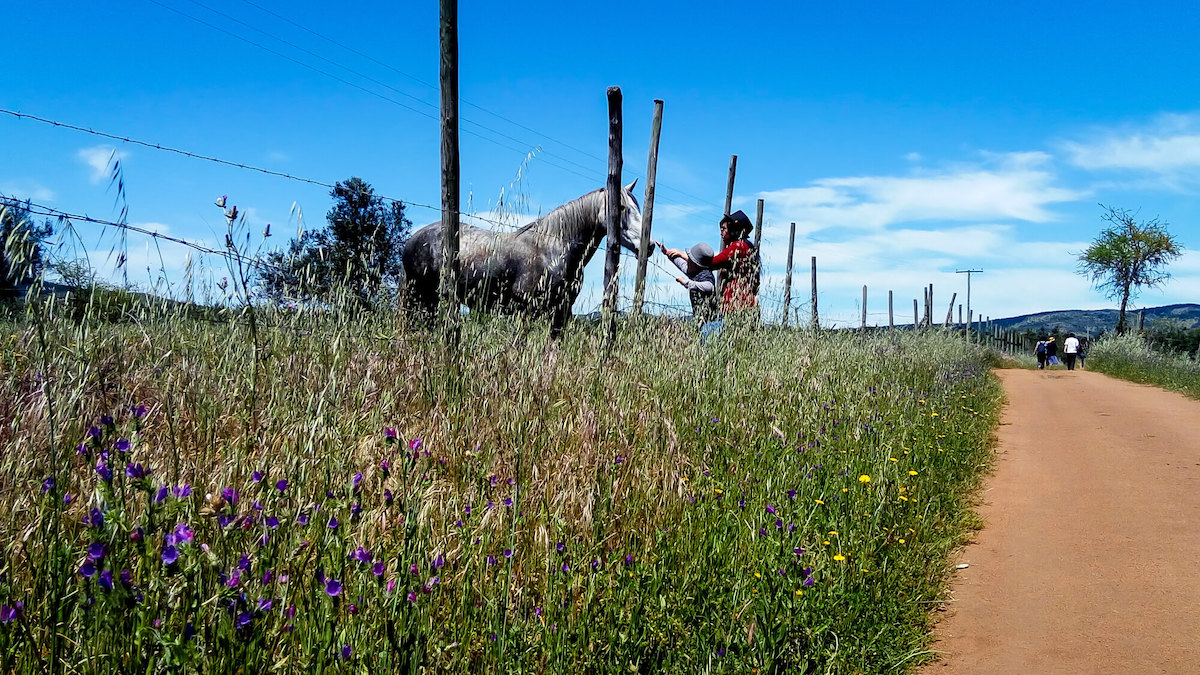
Cultural Differences, a Friend For Life, and Diwali in Chile
-
![Quick Chile Travel Tips [10-Minute Read From a Chile Expert] 9 Quick Chile Travel Tips [10-Minute Read From a Chile Expert]](https://www.onmycanvas.com/wp-content/uploads/2020/05/travel-tips-for-chile-feature-image-horses-on-chilean-road.jpeg)
Quick Chile Travel Tips [10-Minute Read From a Chile Expert]
-
![Things To Do in Chile: 50 Incredible Experiences [2024] 10 Things To Do in Chile: 50 Incredible Experiences [2024]](https://www.onmycanvas.com/wp-content/uploads/2020/05/moai-easter-island-rapa-nui-chile.jpeg)
Things To Do in Chile: 50 Incredible Experiences [2024]
-
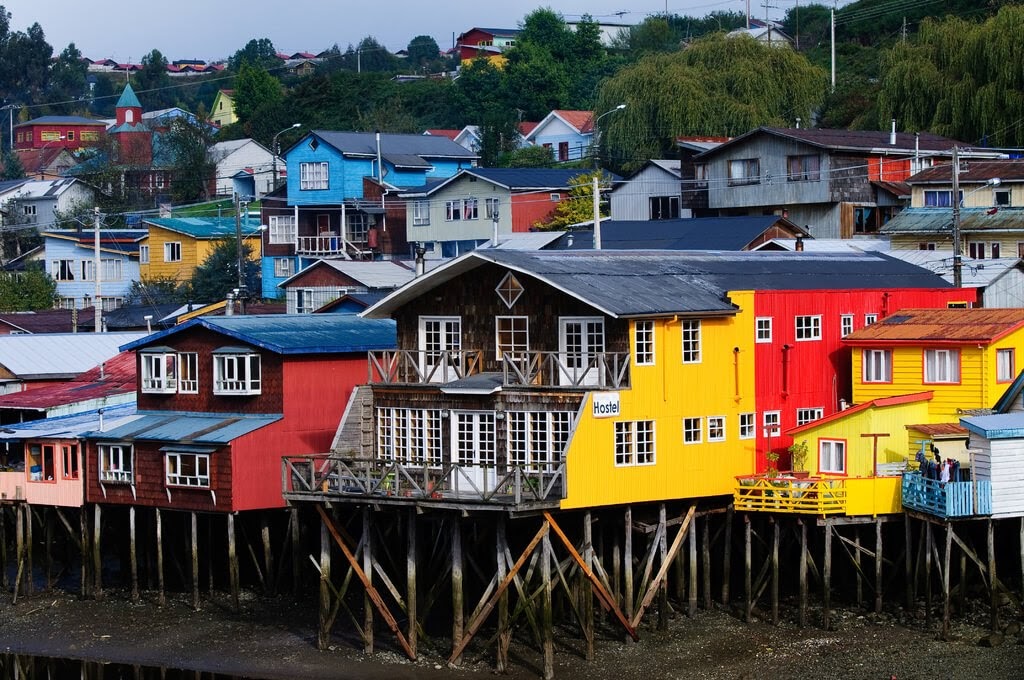
Te Quiero, Chiloé
-
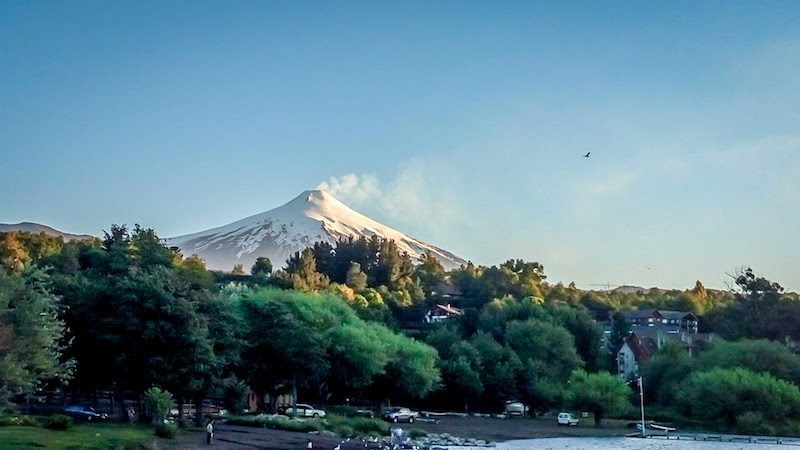
How I Survived the Villarrica Volcano Hike
-
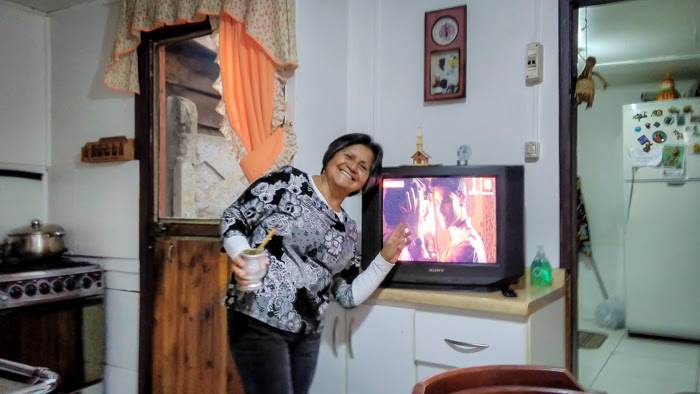
How My Chilean Host Mother Reciprocated to Cruelty With Kindness
-
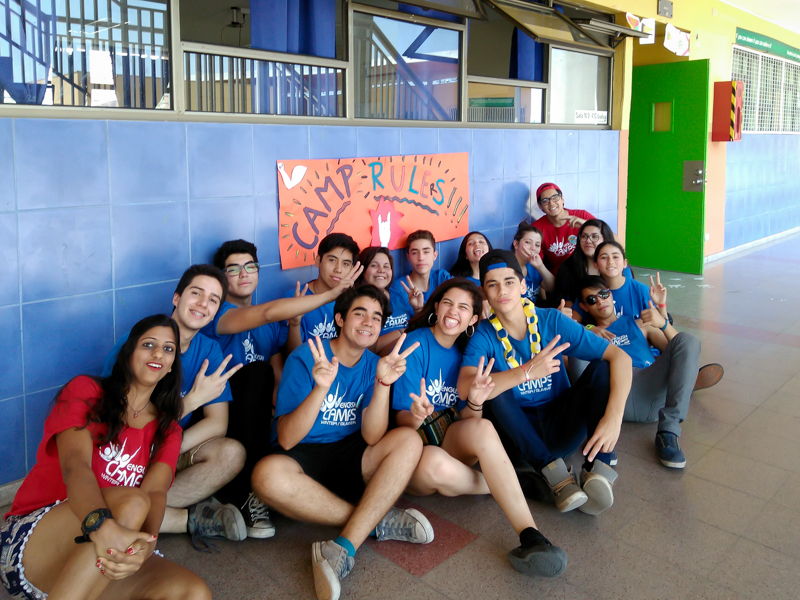
Teach English in Chile–All About English Open Doors Volunteer Program
Peru Travel Tales and Guides
-
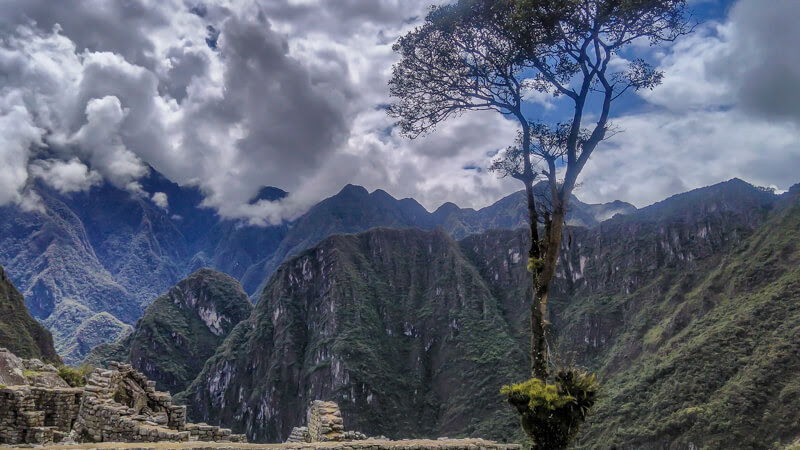
A Peruvian Grandmother’s Act of Kindness
-
![11 Top Things To Do in Peru in 2024 [And My Bonus Secret List] 17 11 Top Things To Do in Peru in 2024 [And My Bonus Secret List]](https://www.onmycanvas.com/wp-content/uploads/2020/03/peruvian-ladies-observing-local-life-top-things-to-do-in-peru.jpeg)
11 Top Things To Do in Peru in 2024 [And My Bonus Secret List]
-
![Manu National Park, Peru [2024] – Daring the Amazon Rainforest 18 Manu National Park, Peru [2024] – Daring the Amazon Rainforest](https://www.onmycanvas.com/wp-content/uploads/2020/03/manu-national-park-amazon-rainforest-peru-south-america.jpeg)
Manu National Park, Peru [2024] – Daring the Amazon Rainforest
-
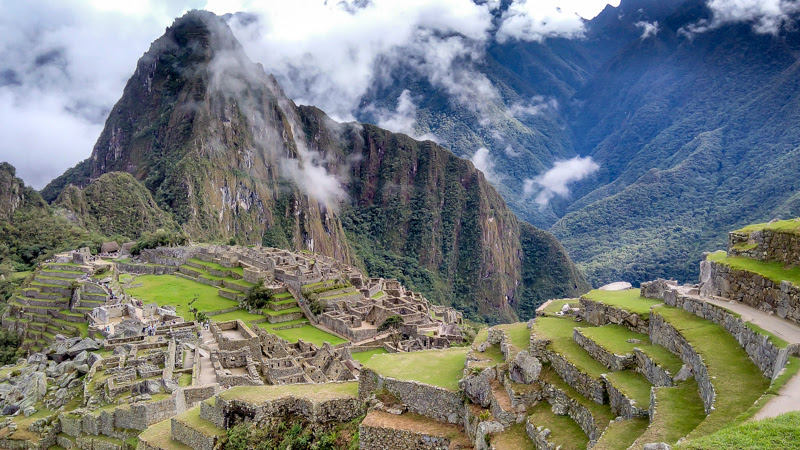
How to Visit Machu Picchu on Your Own
-
![15 Fun Things To Do in Cusco, Peru [For 2024] 20 15 Fun Things To Do in Cusco, Peru [For 2024]](https://www.onmycanvas.com/wp-content/uploads/2019/04/cuscoandesperusouthamerica.jpeg)
15 Fun Things To Do in Cusco, Peru [For 2024]
-
![Puno and Lago Titicaca: Peru's Most Magical Places [2024] 21 Puno and Lago Titicaca: Peru’s Most Magical Places [2024]](https://www.onmycanvas.com/wp-content/uploads/2019/04/a-child-on-a-reed-island-on-Islas_flotantes_de_los_Uros-Lago-Titicaca-Perú.jpeg)
Puno and Lago Titicaca: Peru’s Most Magical Places [2024]
-
![Backpacking Peru [2024]: One Guide to Rule Them All 22 Backpacking Peru [2024]: One Guide to Rule Them All](https://www.onmycanvas.com/wp-content/uploads/2019/04/featureMachuPicchulostcityincascuscoandesmountainsperusouthamerica.jpeg)
Backpacking Peru [2024]: One Guide to Rule Them All
-
![Colca Canyon Trek, Peru – A Complete Guide [2024] 23 Colca Canyon Trek, Peru – A Complete Guide [2024]](https://www.onmycanvas.com/wp-content/uploads/2019/02/hikecolcacanyonarequipaperu.jpeg)
Colca Canyon Trek, Peru – A Complete Guide [2024]
-
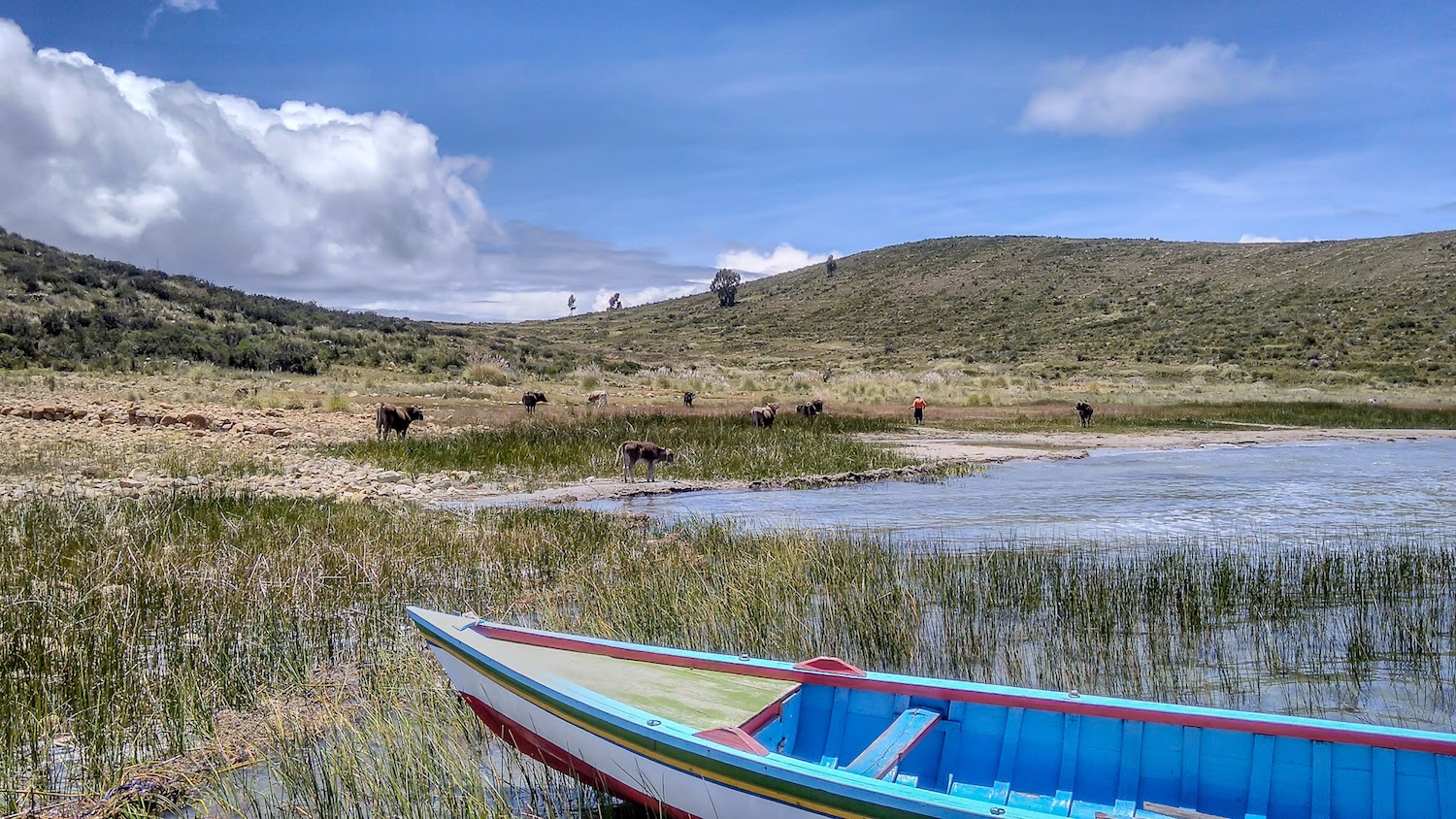
Peru – In Poetry and Pictures
Bolivia Travel Guides
-
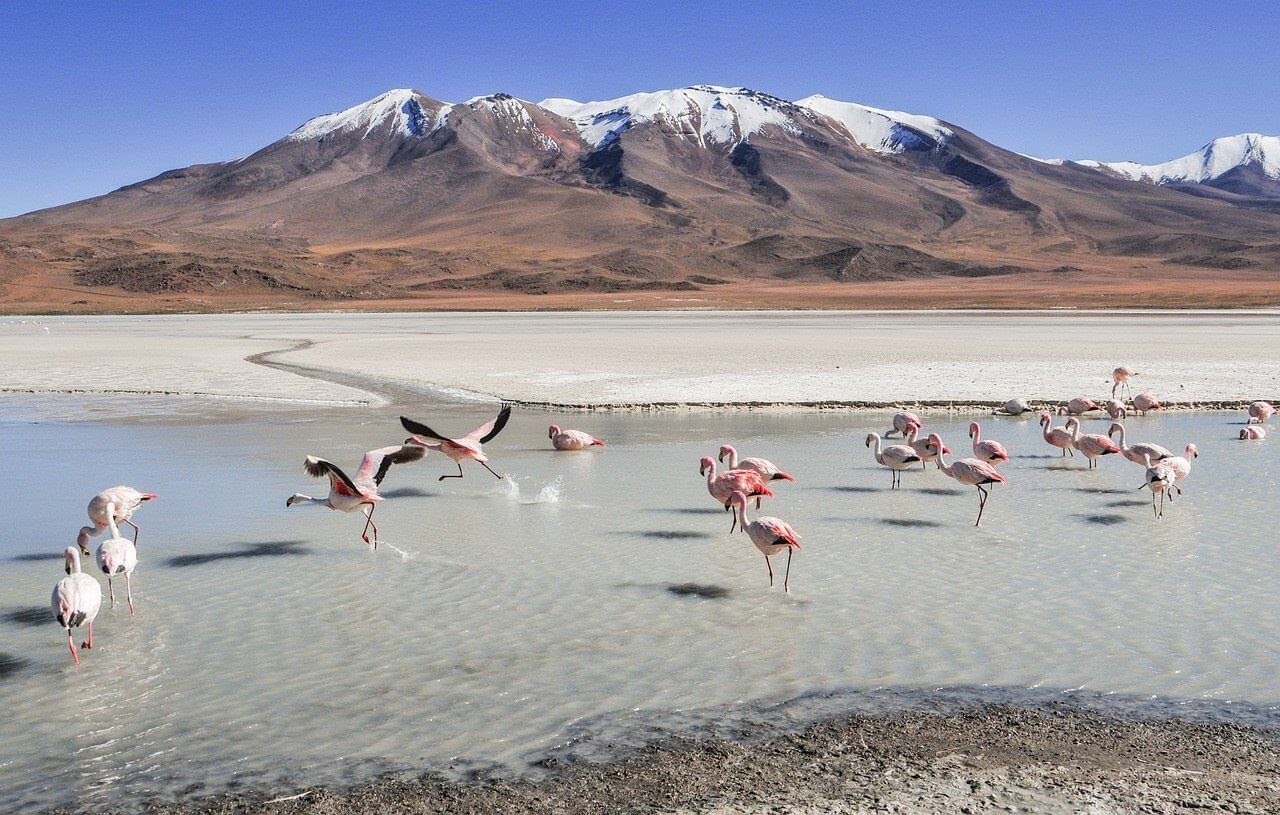
Bolivian Salt Flats Tour – Exploring South America’s Weirdest Landscape
-
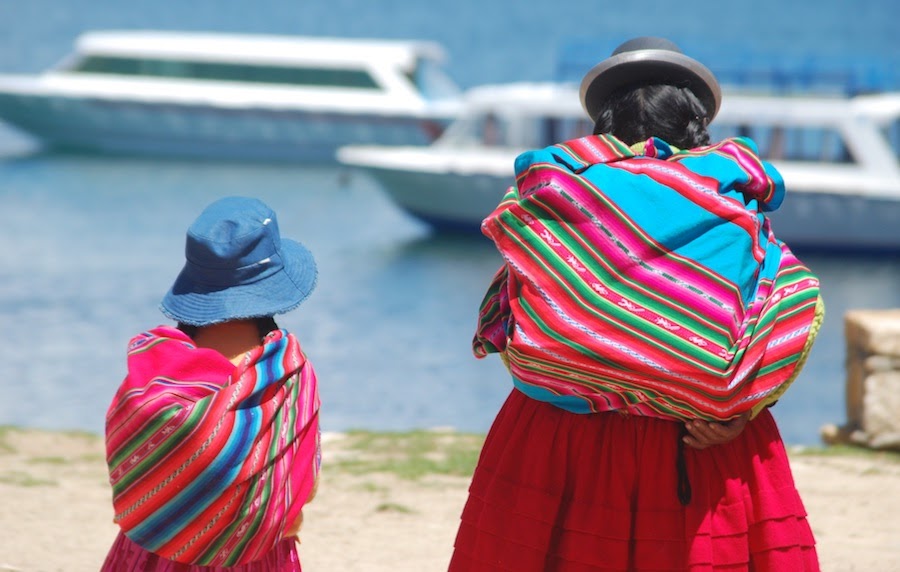
Copacabana, Bolivia – A Cute Town on the Shores of Lake Titicaca
-
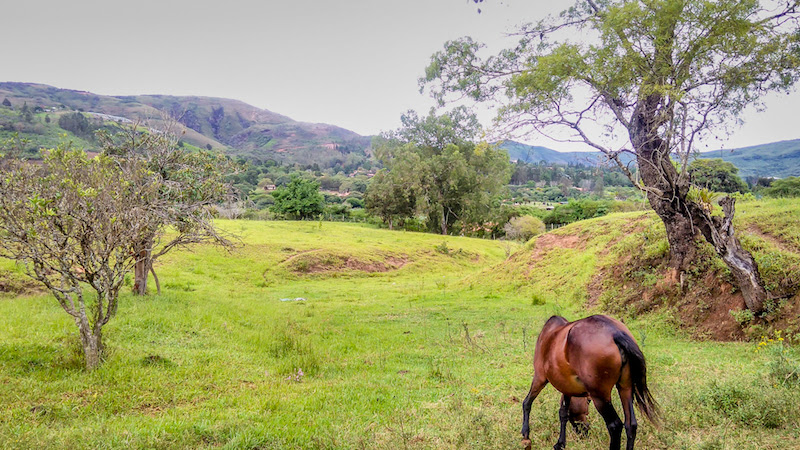
Samaipata – A Bolivian Village You Must Experience
-
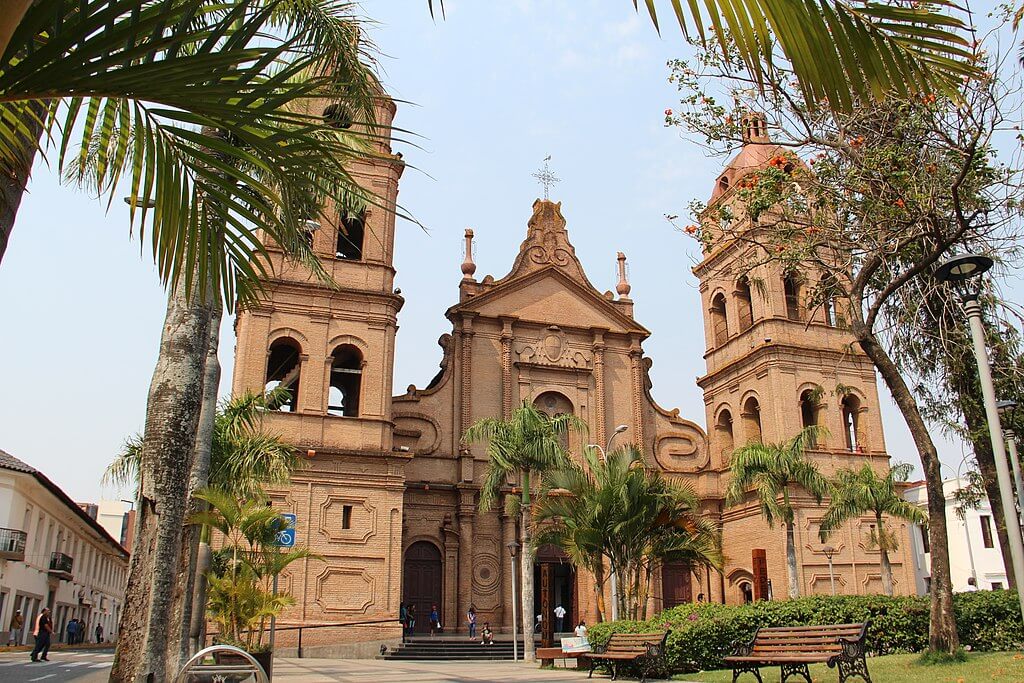
Why You Must Visit Santa Cruz – City of Bolivian Riches
-
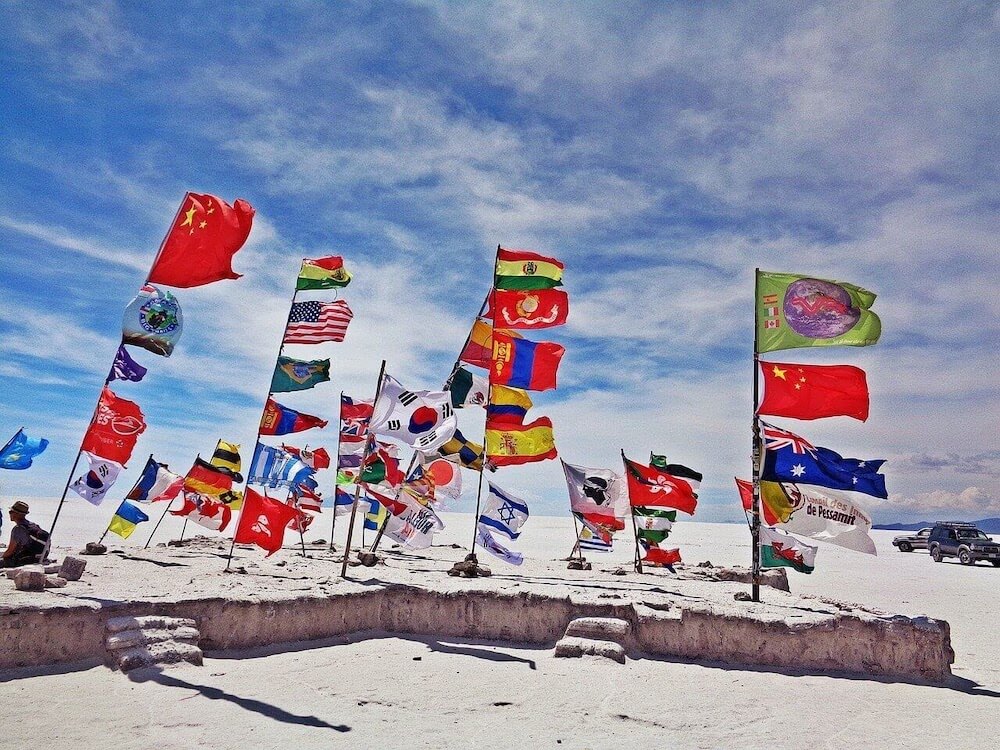
Bolivia Visa for Indians (From India & SA) + Extension Process
-
![Bolivia Travel Guide [2024] – Everything to Know 31 Bolivia Travel Guide [2024] – Everything to Know](https://www.onmycanvas.com/wp-content/uploads/2019/01/lapazboliviamountainssouthamerica.jpeg)
Bolivia Travel Guide [2024] – Everything to Know
Would you love to go after reading my detailed South America travel guide? Tell me in the comments.
Liked my guide? Please pin it and share it with your friends!
*****
*****
Want similar inspiration and ideas in your inbox? Subscribe to my free weekly newsletter "Looking Inwards"!

![Backpacking in South America [2024] – A Beginner's Guide 1 collage of backpacking in south america images](https://www.onmycanvas.com/wp-content/uploads/2020/03/south-america-chile-peru-bolivia-travel-image.jpeg)
![Most Common Spanish Phrases For Travelers [Survive South America] 2 Most Common Spanish Phrases For Travelers [Survive South America]](https://www.onmycanvas.com/wp-content/uploads/2018/12/a-landscape-of-peru-countryside.jpeg)
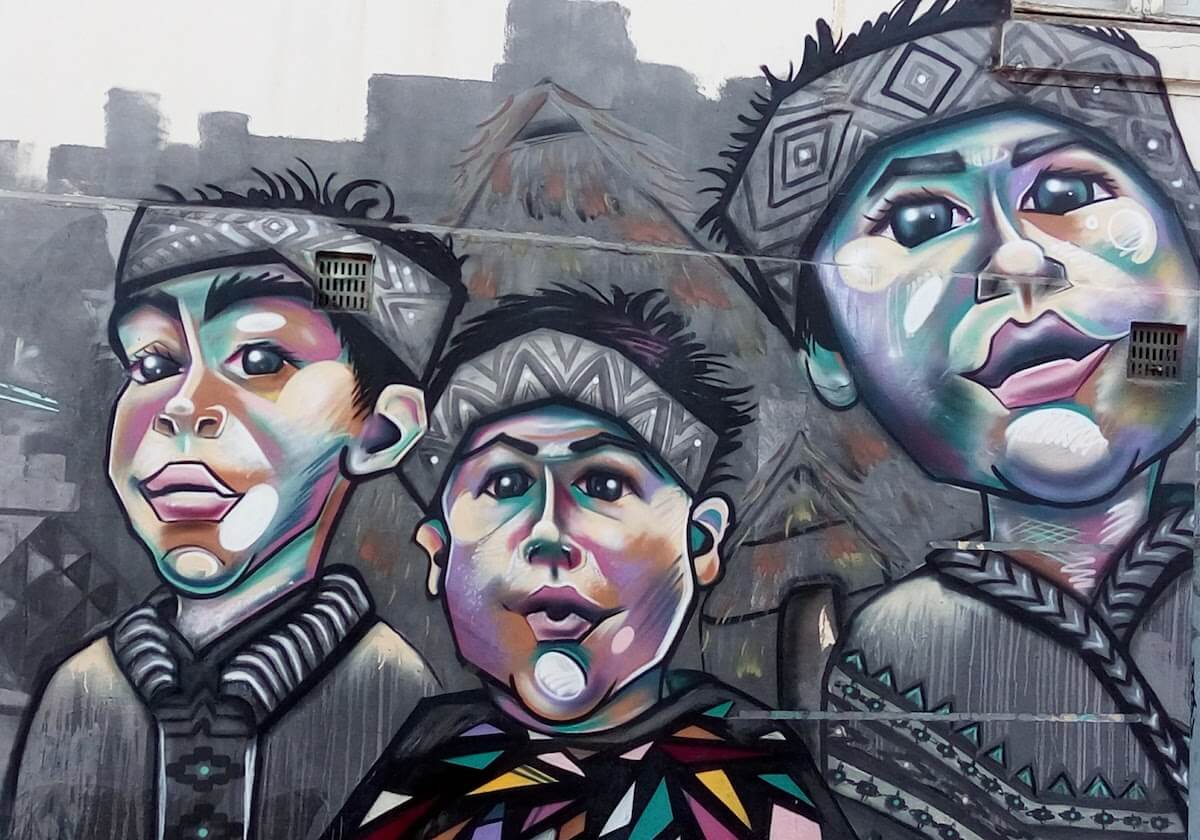
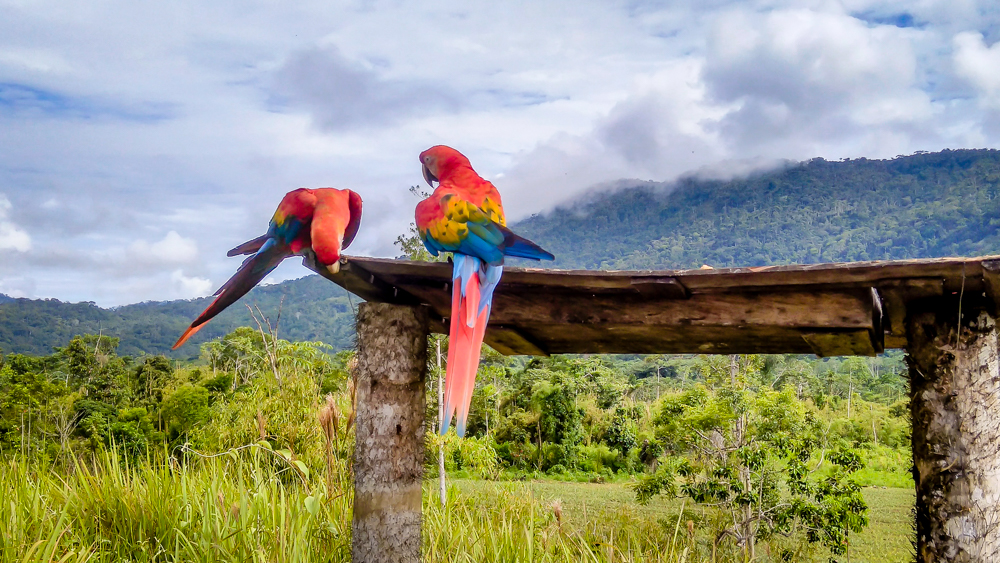
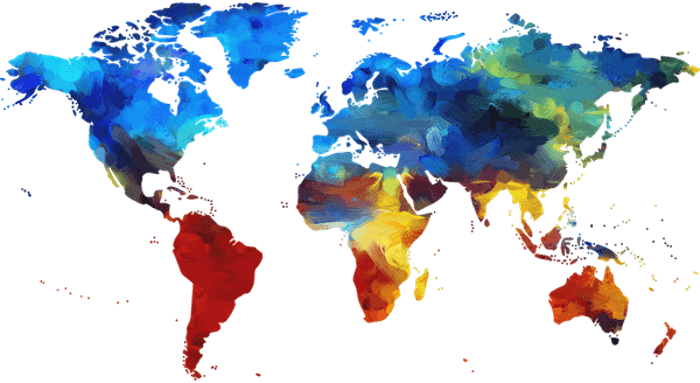
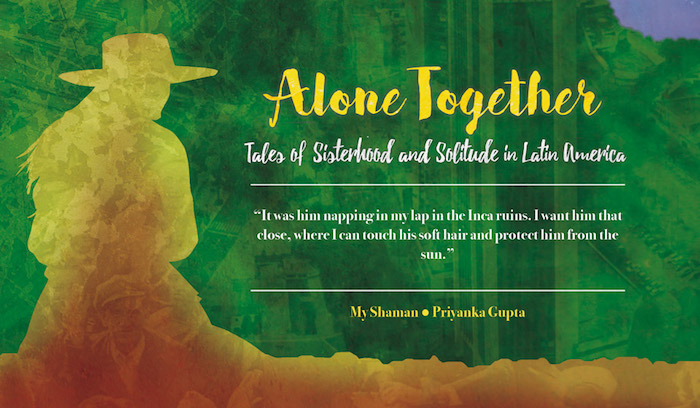
Loved reading this beginner’s guide! Your tips on budgeting and planning were super helpful. I’ve always wanted to backpack through South America and this post has given me the motivation to start planning my trip
Loved reading it! Would love to go to South America some day and you have a plenty of great information here!
Thank you for sharing, I have always thought if it is safe, as it is completaly different from where I live, but I would love to visit!